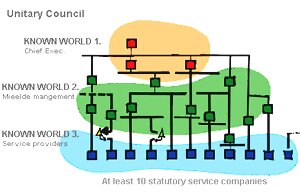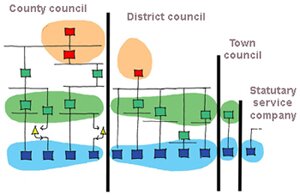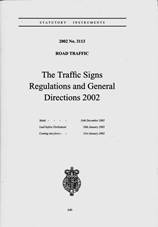1.1 National & Local Government
No work can be carried out in the public realm unless it is specifically permitted by law.
Although building work is strictly controlled by the Town and Country Planning Acts, nearly all work in the public realm, that is in public streets is “permitted development” and does not need planning permission.
Much of the work in the public realm is carried out by the local traffic and highway authority which in most large urban areas such as the London boroughs and big cities such as Birmingham and Manchester, would be unitary authorities. Unitary authorities provide virtually the whole range of local council services.
In rural areas, the local traffic and highway authority is usually the county council. In which case town planning and economic regeneration services, which also have a bearing on the public realm, are provided by the district council, and to an extent by the parish and town councils.
In addition many items of street furniture are installed in the public realm by the statutory service companies, regarding sewers, gas, water, electricity and phones. These companies have their equipment underground so they frequently need to get to them, and dig up the roads and pavements.
Thus the powers to act all come within a complicated legal system.
Management structure with authorities

Chart of action and responsibilities

1.2 Acts, Policies & Regulations
National policies are agreed by parliament and enacted through Acts of Parliament with laws.
Much of the legislation affecting the public realm is carried out by local authorities. Councils are therefore closely governed as to what they can do and how they do it. Nearly all their finance has to be spent strictly in accordance with central government’s wishes.
In the public realm, highways are designed and managed in accordance with specific rules. There is a hierarchy of legislation, regulations and advice.
For example, the Road Traffic Regulation Act gives the Secretary of State for Transport powers to make Traffic Signs Regulations. These regulations are published as the Traffic Signs Regulations and General Directions. The latest version was published in 2002.

The regulations set out the description of signs, when they should be used and the limitations on their use.

